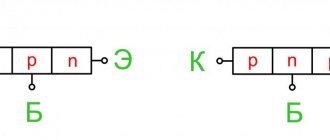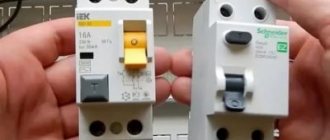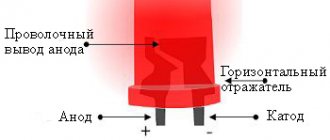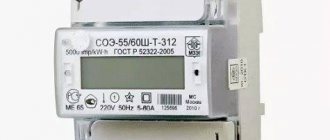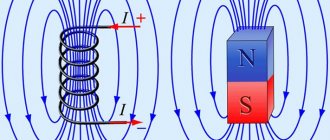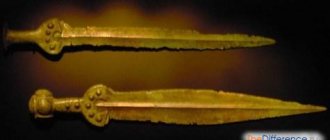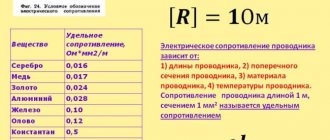When it becomes necessary to drill holes in concrete or stone, you will need to use a special tool. For such purposes, not only drills, but also hammer drills are produced. These are completely different devices that have external signs of similarity. What is better to choose - an impact drill or a hammer drill for drilling concrete, and what differences do these tools have? These issues need to be examined in more detail.
Impact drill and hammer drill - what are these tools for?
To find out what the difference is between an impact drill and a hammer drill, you need to find out their functional purpose. Let's look at each tool separately:
- An impact drill or hammer is a popular type of electric tool that almost every craftsman has. It can be used to drill holes not only in metal and wood, but also in concrete. To drill through durable concrete, the device must be in the hammer drilling mode, otherwise the drill will not penetrate deep into the material. If the tool does not have an impact mode, then it is not intended for drilling concrete, brick and stone
- A rotary hammer or drill hammer is a professional type of tool that is designed directly for carrying out slotting and drilling work on concrete. Pistol-type devices have a mode switch, among which there is a drilling function. Enabling this mode allows you to use the tool to drill holes in metal and wood. However, the main purpose of the tool is to work with high-strength materials such as concrete, stone, brick, etc.
When a master drills a hole in concrete with an impact drill, he needs to apply pressure to the tool. Moreover, the amount of effort directly affects the speed of obtaining results. Unlike an impact drill, a hammer drill does not need to apply pressure, so the master can only guide the tool and hold it.
This is interesting!
If a hammer drill is a tool for processing concrete and brick, then a drill is more intended for working with metal and wood. Only often in everyday life does it become necessary to drill a hole in a concrete or brick wall. In order not to buy a separate tool for this, manufacturers have equipped electric rotators with an impact drilling function. Thanks to this mode, you can quickly and efficiently drill a hole in the wall for a dowel.
Main purpose of tools
Each tool has its own optimal area of use. An impact drill or hammer drill is designed for certain types of work, but they are similar in functionality, and sometimes they can replace each other.
Design features directly determine the available range of work for a particular model. Accordingly, the purchase of a tool should be based not only on technical parameters, but also on the needs of the user.
Impact drill functionality
Electric impact drills perform several functions:
- drilling wood, metal, plastic, rubber, glass, ceramics;
- tightening the screws (if there is a reverse);
- drilling concrete and brick.
Despite the fact that almost all models currently produced have a hammer drilling function in their arsenal, this does not mean that they are capable of replacing a rotary hammer . This is due to the fact that the main task of the drill is conventional drilling, so its design is not designed for prolonged shock loads when drilling concrete. In a word, the impact function of a drill is just an additional option intended for one-time short-term uses.
Reverse allows you to tighten and unscrew screws, but the lack of torque setting, like a screwdriver, makes the function secondary. With experience and dexterity, a drill can only partially replace a corded screwdriver.
The main purpose of the hammer drill
In contrast to the impact drill, the main task of the hammer drill is hammer drilling and chiselling (working on concrete, brick). To implement these functions, the hammer drill has a more reliable design that allows the tool to easily withstand prolonged shock loads. Due to the implementation of significantly greater impact force, all work performed is carried out easier and faster.
Naturally, the area of application for horizontal and vertical hammer drills is slightly different. This is due to different technical characteristics, therefore, the capabilities of the tools also differ.
According to their technical data, horizontal versions of rotary hammers are convenient for use at home or in the country. In professional settings, they are purchased for intensive drilling of holes up to 16 mm in diameter and less than 30 cm in length. Light weight will allow you to use the tool for a long time on weight, for example, when installing doors or suspended ceilings.
Rotary hammers with a vertical engine are used for laying pipes or gating. Tools of this class are much more expensive and are purchased exclusively for highly specialized work. Industrial SDS-MAX models are used for chiseling concrete, for example, when it is necessary to make a door or window opening in a wall.
Rotary hammer Spit 390 SDS Max
What are the differences between an impact drill and a hammer drill - let's look at them in parts
If the distinguishing feature of the purpose of rotary hammers and impact drills is insufficient information, then it is necessary to analyze these tools by disassembling them into their component elements. Knowing the differences in design will be useful in order to choose the most suitable tool for the relevant work.
The instruments under consideration differ in the following structural elements:
- Impact mechanism
- Operating modes
- Tool weight
- Equipment
- Performance
- Price
Let's take a closer look at impact drills and rotary hammers based on the above-mentioned structural elements, and find out when it is better to use the first version of the tool, and when the second.
Difference in working conditions
Particularly significant differences are visible in the operating conditions of the instruments. With the same parameters, it is easier to drill and hammer drill with a hammer drill, for example, with the DeWalt D25501K model. To ensure optimal power, a force of 9-16 kg is required for a drill, and 5 for a hammer drill. With a lower pressure value, the vibration on the hands is also reduced, which is more convenient for the user.
A hammer drill is more convenient because the design of the tool contains an air cushion that has a softening characteristic. Due to this element, the tip of the striker and the piston do not dock with each other. This feature makes the hammer drill more practical to use compared to a drill.
Differences in the design of the impact mechanism
The main difference between an impact drill and a hammer drill is hidden inside. More precisely, the design of these instruments uses completely different types of impact mechanisms. Moreover, the mechanisms differ not only in appearance, but also in the force of impact.
- On the hammer drill, the impact mechanism is implemented through electro-pneumatic and mechanical units. Moreover, the design of the impact mechanism on direct and barrel type devices is different. Direct type devices use a driven bearing that drives the piston. A piston moving in a sealed chamber uses the energy of compressed air to act on the firing pin, thereby moving it. The striker, under the influence of compressed air energy, acts on the back of the drill fixed in the device chuck. On barrel perforators, instead of a driven bearing, a gear is used, to which a rod connected to a piston is attached. The gear and bearing are driven by an electric motor. The impact mechanisms of rotary hammers are reliable, and due to such a complex design, they are capable of developing an impact force from 2 to 20 Joules
- Impact drills have a simplified design of the impact mechanism. It is implemented through the use of two ratcheting devices that are connected to the shaft and chuck of the tool. The shock mode occurs due to the fact that the bushings jump over each other, creating corresponding clicks. This type of mechanism is also called a ratchet mechanism. Screwdriver force regulators have a similar device. The maximum impact force of such devices does not exceed 2-3 Joules
Based on the above, it should be noted that you can drill a hole in concrete with a hammer drill very quickly. The drill will also cope with this task, but with a slight delay. Moreover, the delay time directly depends on factors such as the type of material, thickness, depth of the hole being drilled, as well as power. If you need to drill a hole with a diameter of more than 10 mm in concrete, then it is better to use a hammer drill for this purpose.
This is interesting!
You can drill a 10 mm hole in concrete with a drill, but the life of the impact mechanism will be significantly reduced with each opening.
Perforator device
The hammer drill's impact mechanism can be electro-pneumatic or electro-mechanical. The first one is more common, since it provides maximum impact force with relatively little power.
There are 2 options for the electro-pneumatic impact mechanism: in light devices, a swing bearing is used, in heavy or medium-sized ones, a crank mechanism is used.
When the tool is turned on, the electric motor begins to rotate, the movement is transmitted to the inner sleeve of the oscillating bearing. At this time, the outer sleeve begins to vibrate. The air between the ram and the piston sets the ram in motion, it makes oscillatory movements in time with the piston, striking the striker.
The striker strikes the drill fixed in the chuck.
The advantages of working with a rotary hammer are lower recoil and higher speed.
What operating modes are present on the instruments?
The differentiating feature between an impact hammer and a hammer drill lies in the functionality of these tools. The design of hammer drills has three operating modes, due to which it is possible to process not only concrete. These modes have the following names and purposes:
- Drilling - the regulator must be turned towards the drill image. When this mode is enabled, the tool will operate in drilling mode. When this mode is turned on, the impact mechanism is turned off, and rotational energy from the electric motor shaft is supplied to the cartridge through a gear mechanism. In this mode, you can not only drill metal or wood, but also mix various building mixtures
- Rotation with impacts - the adjuster must be set towards the designation of the drill with a hammer. In this mode, the tool drills concrete, brick, reinforced concrete and stone materials. To implement these actions, you need to install a drill in the tool chuck
- Drilling - the control switches to the hammer designation. In this mode, the hammer drill is a jackhammer that can be used to remove tiles, drill concrete, brick, etc.
Unlike rotary hammers, percussion instruments have two operating modes. This is three times the difference between an impact drill and a hammer drill. The first mode of the tool is the main one - drilling. An electric drill is used to drill holes in metal, plastic, glass, and wood. If you need to get a hole in concrete, you need to turn on the impact drilling mode. Even if this function is available, it is not recommended to actively use the tool for drilling concrete.
This is interesting!
The
regulator
on drills is often located in the upper part of the tool near the chuck. On rotary hammers, the mode switching regulator is located on the side.
Distinctive characteristics
Like any other construction tool, an impact drill and hammer drill have a number of distinctive features:
- Impact mechanism
The instruments have different striking mechanisms:
- The hammer drill has an electropneumatic and electromechanical impact mechanism unit. It produces impact force and provides the most effective performance parameters of this type of construction tool. In the electromechanical type, two coils cause the core to move under the influence of electromagnetic influence. The pneumatic mechanism involves transmitting working energy through a rotating rotor driving a piston. Due to the reciprocating amplitude of the drill, the hammer drill does not require additional physical activity or effort, unlike an impact drill;
- the drill has a more simplified design of the impact mechanism. It often consists of two ratchets that connect to a rotating chuck and the body of the tool.
The existing differences in the design of the impact mechanisms of a drill and a hammer drill determine their different technical and operational standards.
- Operating modes (or functionality)
Modern types of rotary hammers are significantly ahead of the drill, since they have three full operating modes:
- single-mode or drilling - the device uses only rotation without using impacts;
- three-mode - impacts without rotation (they are also called work in jackhammer mode);
- dual-mode (rotations with impacts) - perform drilling in combination with impacts.
Thanks to these three modes, the hammer drill can be used not only for drilling, but also for other types of work - chopping off excess material, gouging out grooves or niches in stone walls.
The drill will not be able to provide a high level of speed, because its impact function is just one of the additions to the main one.
Drills have only two modes and are available in several varieties:
- Due to its versatility and with additional tools, an impact drill can perform the functions of a mixer, grinder, hammer drill and screwdriver. Conventional drills allow you to drill holes in wood and metal products. They also have a subtype called “angle drills” - they make holes in hard-to-reach places;
- drill mixers – have an elongated additional handle and high torque. Used for preparing a variety of building mixtures;
- impact - in their design they can combine the functions of drilling and impact. With their help you can drill brick and concrete;
- drills and screwdrivers - in addition to their main function, they can drive or remove screws.
- Total weight of the power tool
Depending on their weight, rotary hammers are classified as:
- lightweight - the weight of the structure reaches 2-4 kg;
- medium – within 5 kg;
- heavy – weight exceeds 5 kg.
The average weight of an impact drill can range from 1 kg to 4 kg.
- Equipment
A hammer drill and an impact drill differ in the number of parts used and the methods of attaching them:
- For drilling in a hammer drill, drills with pobedite surfacing are most often used. The most vulnerable part of the tool is the ratchet. Therefore, when choosing a drill, you should take into account that under heavy loads and severe vibration they wear out very quickly;
- In addition to drills, rotary hammers also use drills, which are secured in chucks using a special system of clamps and specially shaped grooves
Having a certain degree of freedom in the movements of the drills in the chuck, the impact load in the hammer is significantly reduced.
The diameter of the chucks determines the possibility of using small or large drills.
Unlike an impact drill, the hammer drill contains a special adapter that allows you to change cartridges if necessary.
Another positive point when choosing a hammer drill is the impact of a lower level of vibration on the master’s hands due to the softening air cushion located in the pneumatic impact mechanism.
- Performance
Determined by the impact energy value. For a rotary hammer it ranges from 1.5-20 J and is always an order of magnitude higher than for an impact drill. This largely depends on the mass of the device and the pressure force of the master. The technical characteristics of rotary hammers may also indicate the frequency of blows per minute: from 4 to 4.5 thousand blows in more powerful models and 2-3 thousand in less powerful ones.
- Price
Taking into account the same power of tools, a hammer drill is always significantly more expensive compared to the price of an impact drill. However, we should not forget that a hammer drill belongs to the category of professional tools, so its cost is fully justified - drilling speed and durability.
Remember that when working with a hammer drill you need to apply three times less effort than when using an impact drill
How much do impact construction tools weigh?
One cannot fail to note such an important distinguishing factor as the weight category of the instruments. The rotor is not only small in size, but also light in weight. This is due to the use of a low-power and high-speed electric motor capable of reaching speeds of up to 4000 rpm.
Rotary hammers are equipped with more powerful electric motors that develop low speed, but at the same time have high torque, which directly affects their weight category. Drilling devices are divided into three types by weight:
- Lightweight - up to 4 kg
- Medium - up to 6 kg
- Heavy - from 6 kg. These are barrel perforators, which, in addition to working mechanisms, have a special compartment for pouring liquid oil
The most powerful impact drill weighs no more than 4 kg. Light weight simplifies the operation of the tool, but not in all cases. When it is necessary to drill through concrete, the weight of the tool plays a big role. If, when drilling, the hammer needs to be pressed firmly against the surface of the material being processed, then the drill hammer does not need such actions.
Differences in electrical equipment performance
The difference between a hammer drill and this characteristic is that this power tool has much greater power due to the large amplitude of the impact of the impact mechanism. The impact energy varies from 2 to 6 J (depending on the tool model). The higher this criterion, the more difficult tasks electrical equipment can perform: from drilling small recesses to gating in reinforced concrete and splitting hard surfaces. The force of the impact mechanism of the unit is many times greater than that of a drill, and to perform such work, you need to exert a minimum of physical effort.
The higher the power of the power tool, the more massive the device will be. The increase in the productive power of electrical equipment is also facilitated by its weight, which is much greater than the weight of a drill with the same power. A powerful hammer drill is necessary for working with large-width drills.
Contents and types of fasteners
To understand how else a drill hammer differs from an impact drill, you need to pay attention to the fastening element. Drills and rotary hammers use completely different types of fasteners, which are designed to fix actuators - drills and augers.
Cam-type chucks are installed on the impact rotator. They are also called collet chucks, which consist of three cams that move simultaneously when the holder rotates. Chucks of this type are designed for fixing nozzles with cylindrical and hexagonal shanks. The cams compress the shank of the nozzle at three connection points, and thereby ensure its reliable fastening.
Rotary hammers use completely different chuck mechanisms. They are based on the quick-clamping principle of fixing the nozzle. The main feature of drill hammer chucks is that the attached attachment has the ability to move freely vertically. This free movement is necessary to generate impact force with the tool. Quick fixation of the nozzles in the hammer drill chuck is carried out by a ball that engages with a groove in the tail part of the nozzle.
Since these tools use different types of cartridges, the installed attachments will also have corresponding differences. The main difference lies in the design of the tail part of the nozzles. Conventional concrete drills are installed on the rotators, and drills are available for the rotary hammer. Outwardly, they are similar to drills for concrete, but the difference is that on the shank of the drills there are 2 open and 2 closed grooves.
This is interesting!
For impact drills, drill bits for concrete are not available with a diameter of more than 12 mm. The maximum hole size that can be drilled in concrete with this tool is 10 mm.
Design features
Despite the similarity of purpose, an impact drill differs from a rotary hammer not only in many technical parameters, but also in the operating principle of the impact mechanism. Design features dictate the optimal area of use of the tool, and this must be understood, otherwise the equipment fails and the result of the work is unsatisfactory.
Operating principle of an impact drill
The impact mechanism of the drill is quite simple, without any complex parts. It is based on the mechanical effect of rubbing gears with conical teeth cast on them, with the help of which the rotational moment is converted into translational. Simply put, the impact is caused by the slipping of gears.
Impact drill device
The disadvantages of this design are the small amplitude of vibrations, which is why the impact force, in comparison with a hammer drill, is several times weaker. In addition, this design leads to rapid wear of gears that experience strong friction under load.
Drilling, as the main task of any drill, does not put a serious load on the mechanism. The only point is that the motor of a low-power drill cannot be overloaded; when working, the user must comply with the technical requirements.
The passport for the tool always indicates the maximum hole sizes; exceeding the permissible values will have a negative impact on the internal parts.
Operating principle of a rotary hammer
In a rotary hammer, the impact function is implemented using two types of mechanisms, the main one of which is pneumatic; it is this type of drive that is capable of transmitting the maximum possible impact force to the working equipment. The second type is mechanical, slightly similar to the operating principle of an impact drill, but now it is becoming less common in rotary hammers due to lower efficiency and increased wear of parts.
It is very simple to understand what type of mechanism a hammer drill has - a tool with a pneumatic drive without load does not produce impact movements, unlike a mechanical one, where during operation the impact is carried out regardless of the working position. This can be determined even visually when idling.
Pneumatic impact has become widespread among professional, semi-professional and high-quality household tools. This type of mechanism increases the cost of the hammer drill, but from a practical point of view it is more profitable. Wear of gears due to mechanical shock will inevitably lead to repairs, or rather, replacement of parts; when the teeth wear out, the shock gradually weakens and disappears.
Thus, working on concrete or brick is the main function for any hammer drill. The difference is that the best option would be models with a pneumatic drive, while tools with a mechanical impact have a shorter lifespan and are intended for rare household work.
What productivity do the tools have?
Due to the fact that the hammer drill is equipped with a powerful electric motor and a more advanced impact mechanism, it has high productivity. Impact-type rotators are inferior to rotary hammers, and in addition to low productivity, they are not yet designed for long-term use in impact mode.
Rotary hammers are divided into household, semi-professional and professional. A household hammer drill is also not designed for long-term use, but unlike an impact drill, it will cope with the task of drilling a hole in concrete much faster and more efficiently.
Variety of attachments
The number of attachments illustrates the capabilities of the power tool. Let's look at how a hammer drill differs in equipment from a drill. Let's start with a light tool: drills are sold without attachments or with a set for “communication” with various materials. These sets include drills for metal, wood, and concrete. The latter come with a reinforced striking part, which makes it quite easy to make holes in walls made of brick or block. Manufacturers sometimes complete the tool case with several drills of each type and different thickness.
Rotary hammer attachments:
- Drills and drills are needed for impact/non-impact drilling.
- Crowns are used to make through and blind holes in walls. Through holes are needed for laying pipes, blind holes are needed for installing sockets.
- Chisels, picks, blades for chipping and dismantling work.
Classification of nozzles:
| Edge material | High strength metal |
| Diamond | |
| Pobeditovaya | |
| Method of influence | Unstressed |
| Drums | |
| Shank type | SDS maximum |
| SDS plus | |
| Work technology | Dry |
| Water cooled |
Choosing an original tool: 4 tips on how to distinguish an original hammer drill from a fake
How much does an impact drill and hammer drill cost?
Many craftsmen prefer to drill holes in concrete with a drill, since the cost of this tool is always at an affordable level. Only as a result of such use it turns out that the tool quickly breaks down when drilling concrete frequently, or its performance decreases due to wear of parts. As a result, you have to repair the drill or buy a new one.
A hammer drill is more expensive than a drill, but it is worth the cost. The high price is due to the use of a powerful electric motor and a complex impact mechanism. However, compared to an electric hammer, a hammer drill will last 10 times longer if used as intended for concrete processing.
The average cost of an impact drill is 2,000 rubles, while a hammer drill can be purchased for at least 3.5-4 thousand rubles. There are cheap models of rotary hammers - household ones, which are intended only for occasional use.
This is interesting!
When buying a percussion instrument, do not look at its cost. First you need to decide how often you plan to use the device for drilling concrete. If often, then we definitely choose a hammer drill. If you need to use a tool for drilling holes in concrete from time to time, then there is no point in overpaying, and it is better to buy an impact drill.
Differences in equipment
Drills use regular drills or drills with a pobedit or diamond tip as equipment. To obtain holes with a larger diameter, crowns can be used. Rotary hammers are equipped with drills. The chucks of these tools differ radically. If self-centering three-jaw chucks (one- or two-clutch) are used to clamp equipment in drills, then in rotary hammers quick-release chucks of the SDS type are used in plus, max or top modifications, depending on the size of the equipment.
The tail part of drills differs from drills in that it has longitudinal closed and open grooves, ensuring reliable fixation of the equipment in the chuck with the possibility of longitudinal free movement. To install a simple drill in a hammer drill, you need to replace the chuck or use a special adapter that allows you to attach a three-jaw chuck to an SDS clamp. This results in a complex design for fastening the drill, which does not provide good rigidity and alignment of the equipment.
Three-jaw drill chucks have a maximum mounting diameter of 12mm, and SDS-plus chucks provide gripping drills with a diameter of up to 16mm, SDS-max – up to 40mm. The maximum length of drill bits held in drill chucks does not exceed 400mm, while hammer drill chucks can hold drill bits up to 1000mm in length. A more diverse range of hammer drill accessories allows you to expand the functionality of the tool.
What parameters are used to select tools?
Every craftsman must have an impact drill on his farm. It can not only drill metal and wood, but also concrete. If you plan to carry out repair and construction work, then it is recommended to purchase a hammer drill. Thanks to this specialized tool, you can perform various actions with durable materials - drill, drill, groove, etc.
When choosing percussion instruments, you need to take into account their following features:
- Power - the higher the indicator, the more efficient the tool. Only power directly affects the weight of the tool, so it is recommended to select tools based on power based on the complexity of the work.
- Design - hammer drills come in pistol and barrel types. The most popular are pistol hammer drills. They are lightweight and allow you to perform various manipulations with concrete. Barrel hammer drills belong to the category of heavy professional tools
- The presence of a reverse mode - this function is quite useful, as it allows you to rotate the tool chuck in both directions, which is very important when a drill or auger gets stuck in a hole
As for the cost and manufacturer, everything is simple here. If you need a reliable household assistant, then you should buy impact drills and hammer drills from well-known brand manufacturers. Such tools will never fail, and if they break down, you can always find spare parts. If the devices are used occasionally, then you should not choose the most expensive options.
Is it possible to drill a hole in concrete with a screwdriver?
If there are no special tools at hand, then a screwdriver is used to drill concrete. However, attempts lead to the fact that it is not possible to achieve a positive result. This is due to the fact that the screwdriver does not have an impact drilling function, so it is contraindicated to use it for working with concrete. A screwdriver is designed to work with self-tapping screws, but it can also drill through wood. Just keep in mind that screwdrivers are based on a low-power electric motor. If the motor experiences maximum load, it may simply burn out.
If you are going to drill through thick wood with a screwdriver with a 10 mm drill bit, then immediately abandon this idea. You should especially not use the tool for drilling concrete or mixing the mixture. It will not be possible to drill concrete with a screwdriver, since this device does not have an impact mode. It is also not recommended to mix bulk mixtures with a mixer attachment in the chuck. The engine will experience high loads (and it has very little torque), and therefore can burn out very quickly.
This is interesting!
Each tool has its own purpose, so before using one or another device, you should read the instructions.
How does an electric drill work?
The main components of an electric drill include:
- A chuck whose task is to fix the drill in the required position;
- An electric motor that transforms electricity into rotational energy;
- Induction rings – smooth out the frequency of electric current;
- Gearbox – transmits the energy impulse from the chuck to the drill;
- A device power button with a wheel - rotation speed regulator;
- A capacitor that protects against interference in the voltage circuit;
- Cable for connecting the device to an outlet.
Scope of application of the drill
The main function of this tool is to create through holes in different types of materials by drilling. An electric drill equipped with a striking mechanism has the difference that, when using a special attachment, it is capable of piercing the materials from which the walls of multi-story buildings are made (brick, concrete). Another area of application of the device is mixing pastes, water-based paints and a number of other building solutions. The use of electrical engineering will allow you to obtain a homogeneous consistency in the shortest possible time.
Important! There is also a tool option called a screwdriver. It is distinguished by sharpening for tightening and unscrewing various types of fasteners: screws, self-tapping nails, dowels and others. It also performs the traditional functions of drills associated with drilling.
Purpose of drills
The tool comes with a set of drills designed to work with various types of material. The most common ones include:
- High-strength drills for making holes in metal products;
- Wood drills;
- Spear-shaped drills for tiles and glass - materials that, when working with a conventional drill, have a high risk of chipping;
- Options made from a super-hard alloy, known as pobedit, are used when working in shock mode;
- Crown-shaped nozzles for drilling large holes;
- Round nozzle for sanding the surface;
- A wire brush that fits onto a metal stripping tool;
- Nozzle for making solutions and mixtures.
What is better to choose for drilling concrete - a drill or a hammer drill?
Based on the analysis described above, it is clear that although an impact drill and a hammer drill can be interchangeable, they have completely different purposes. An electric rotary hammer is designed for working with metal and wood, and rotary hammers are produced for working with concrete, brick and stone. You can drill into concrete with an impact drill, just as you can make a hole in wood with a hammer drill. However, frequent use of tools for their indirect purposes contributes to rapid wear of the mechanisms.
A good master always has two tools at his disposal - an electric hammer with a hammer function, and a hammer drill. Depending on the planned work, he will use the appropriate device. If you don’t have a drill or a hammer drill in your arsenal of tools, but you still need to drill a hole in wood or concrete, you can do this with any of the available devices.
This is only appropriate if a hammer drill is used to drill several holes in wood, and a drill is used to drill several holes in concrete. By the way, the brace, unlike a drilling device, is only capable of drilling concrete. When you need to get a groove or dismantle brickwork, the device in this case is absolutely useless. If renovation work is planned at home or in an apartment, then it is definitely not worth starting it without purchasing a hammer drill.
It is impossible to unequivocally answer the question of which is better - an impact drill or a hammer drill. The difference between these instruments is quite large, but the presence of drum modes makes them interchangeable. If during work you feel that the electric hammer you are using cannot cope with the task of drilling a hole in concrete, then you should use a hammer drill.
How does a hammer drill differ from a drill?
Many buyers, entering a hardware store, do not know what to choose: a drill or a hammer drill. These two tools are different from each other, so they are used in different areas.
A hammer drill is necessary for drilling a hole in a brick or concrete wall. You can also use an impact drill for this purpose, the operation of which is designed in such a way that simultaneously the drill, bit or drill rotates and the impact occurs in the axial direction.
But it is worth noting that this is where the similarity between the instruments ends. The first and main difference between a hammer drill and an impact drill is that a hammer drill is needed for chiselling, and an impact drill is needed for drilling.
The difference between a hammer drill and a drill is that the hammer has an impact mechanism, which is a complex unit, the operation of which is possible in electromechanical and electro-pneumatic versions. An electro-pneumatic type of hammer drill is often produced, since pneumatics can improve the operating parameters of the tool.
The drill contains an impact mechanism that is simpler in structure. There are two ratchets here. The first ratchet is connected to the body and the other is connected to the rotating chuck. If you turn off the hammer function, the ratchets no longer contact each other.
If you switch the drill from drilling mode to impact mode, the stopper is removed. During operation, the chuck and drill move in the axial and translational directions simultaneously.
Today, rotary hammers with a full range of functions can operate in three modes: drilling without impact, jackhammer mode, and drilling with impact.
Impact drills can only operate in two modes: the first is drilling without impact, the second is drilling with impact. Moreover, with a hammer drill you can make niches and grooves in the wall, and remove excess material from the surface.
In terms of performance, an impact drill is much inferior to a hammer drill. The latter has quite a large impact energy. The impact energy of a drill is very small and depends on the force of pressing the tool against the material being processed. The impact force of the drill will be small, even if it is pressed firmly, since it has a small amplitude of movement of the drill in the axial direction.
For hammer drills and drills, various tools and methods of attaching them are used. Drills and augers are mounted in chucks for both representatives, but the design is very different. The hammer drill has a clamping system for quick tool changes. These include SDS-plus, SDS-max and SDS-top. The instrument is secured using grooves of a special shape.
Due to a certain degree of freedom relative to the chuck in the axial direction, the hammer does not bear a large load, like a drill. To make a hole with a hammer drill using a regular drill, a special adapter or jaw chuck is used.
Today, hammer drill manufacturers equip the kit with special adapters and chucks for a conventional drill.
The difference between a hammer drill and a drill If you use an adapter, a structure is formed that does not secure the drill rigidly enough, and accordingly, the beating during rotation will not occur properly.
The difference between a hammer drill and a drill is also that working with a hammer drill is much easier. The pressing force of a rotary hammer is 5 kg, and that of a drill is 10-15 kg.
Since the hammer drill has less clamping force, there is less vibration on the hands. Thanks to the softening air cushion in pneumatics, the firing pin and piston do not collide with each other, which means your hands will get less tired.
If you use a drill with a hammer function often enough, its service life will be reduced significantly, so for chiselling it is still better to purchase a hammer drill. Its pneumatic mechanism significantly reduces vibration, allowing all mechanisms to operate in a gentle manner.
The hammer drill has a special safety clutch that protects the tool from breakage in some cases, for example, if the drill hits the reinforcement.
In a drill, the ratchets will work without a gentle regime, so these parts wear out quickly. The cost of tools varies for the same power. The price of a hammer drill is twice the price of a drill.
